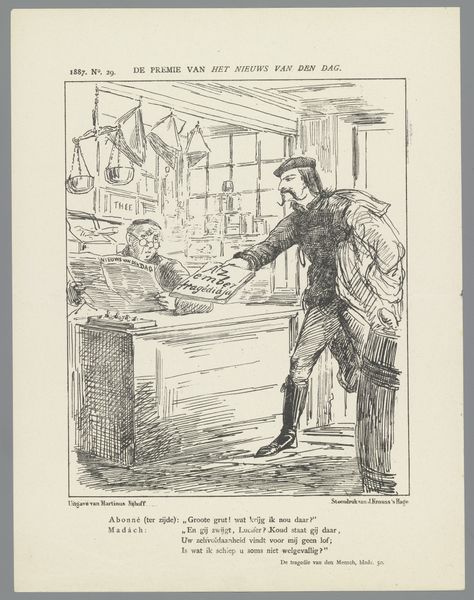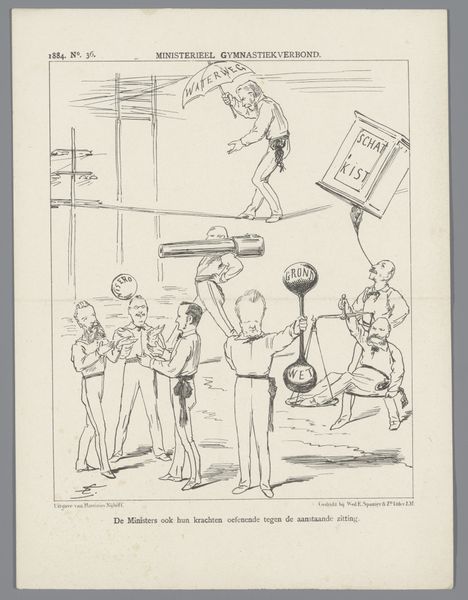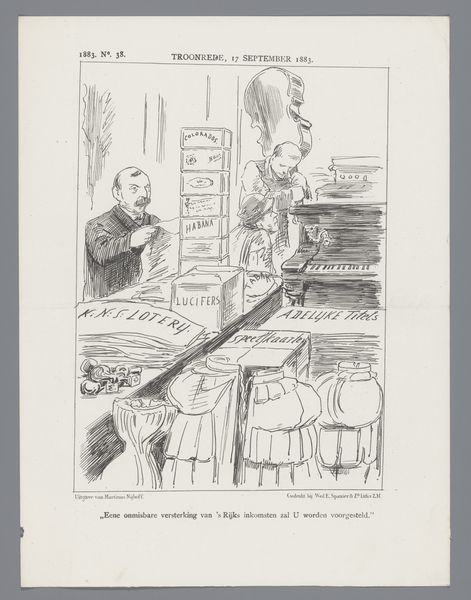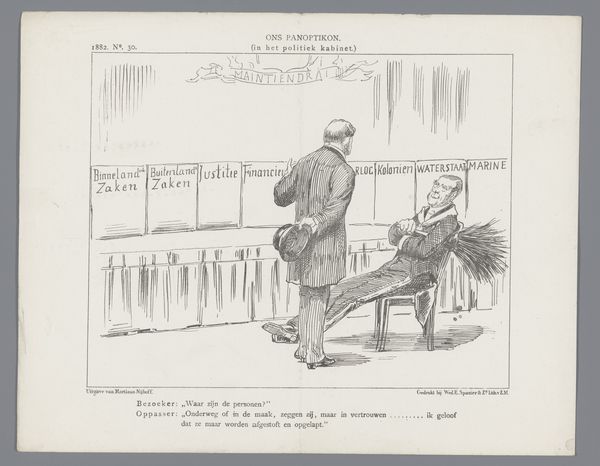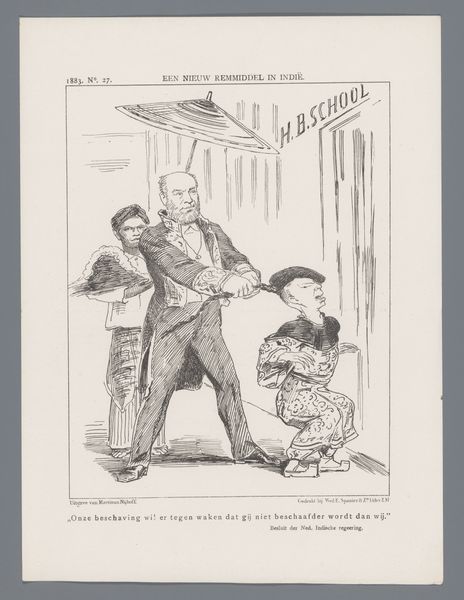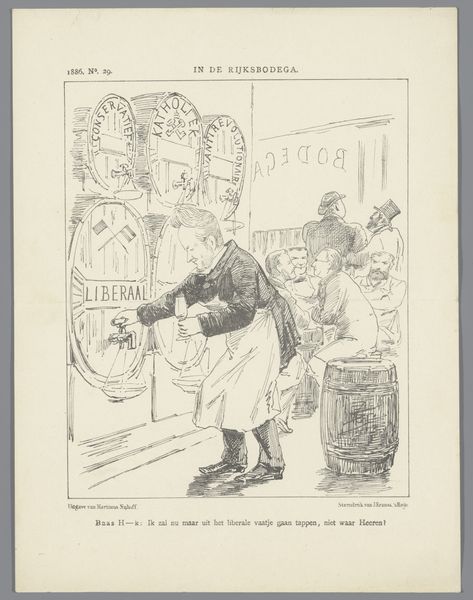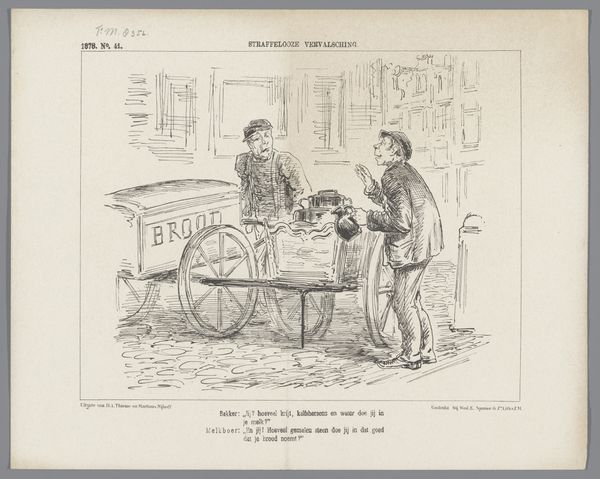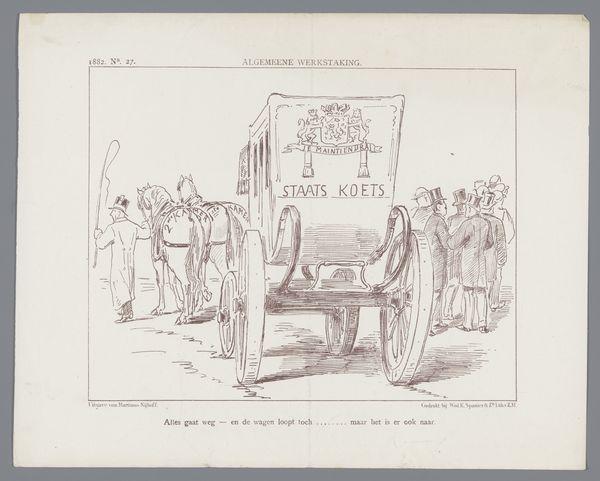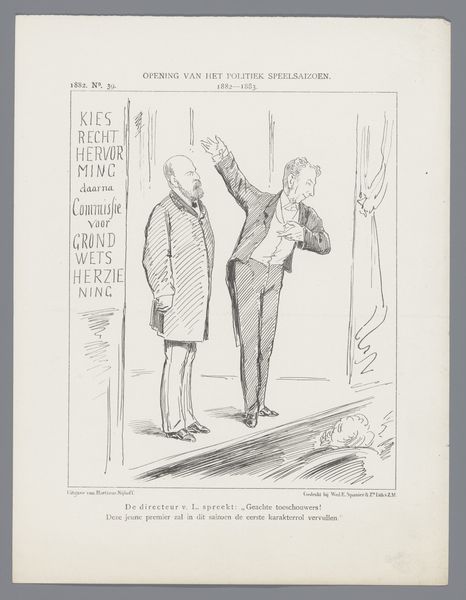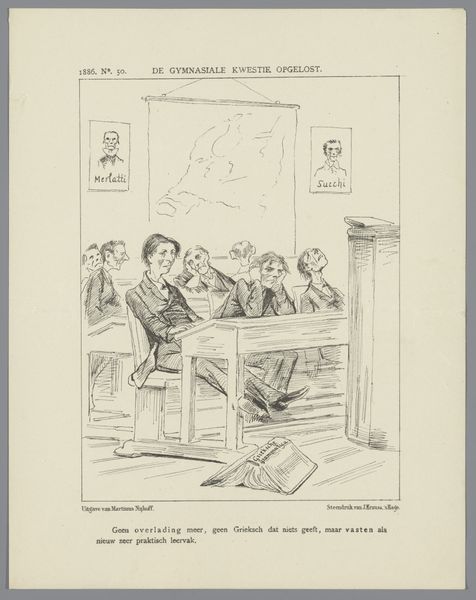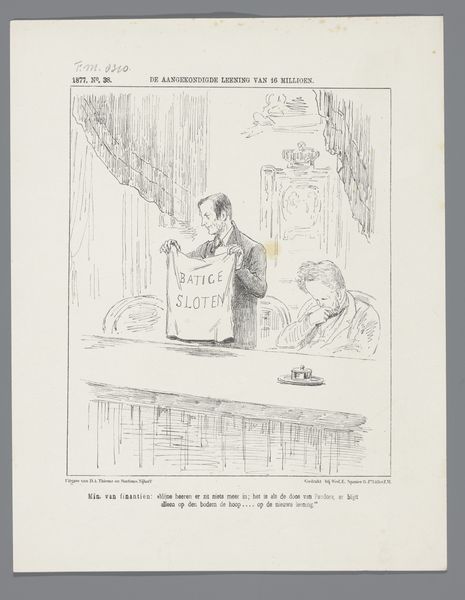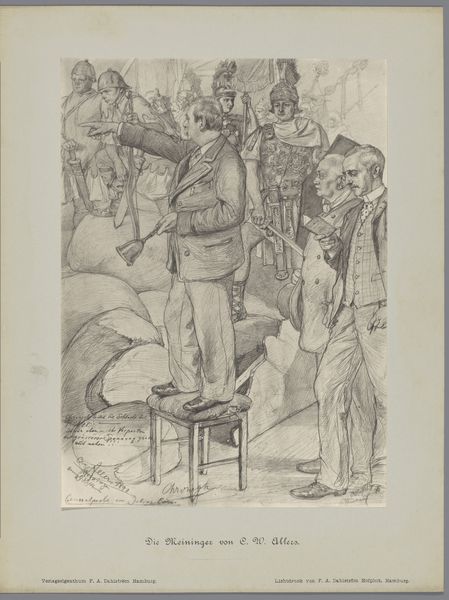
Politieke spotprent met de begrafenis van het kabinet Van Lynden van Sandenburg, 1883 1883
0:00
0:00
drawing, print, graphite, pen
#
drawing
# print
#
caricature
#
graphite
#
pen
#
genre-painting
Dimensions: height 275 mm, width 215 mm
Copyright: Rijks Museum: Open Domain
Editor: This is a political cartoon by Johan Michael Schmidt Crans, made in 1883. It’s titled “Politieke spotprent met de begrafenis van het kabinet Van Lynden van Sandenburg,” showing what seems to be a funeral procession of coffins. The mood is obviously quite somber, yet the style feels almost whimsical. What symbolic meaning do you think Crans was trying to convey? Curator: The imagery here evokes a potent sense of finality and failure. We see not just death, but the symbolic burial of political ideas or policies. The procession itself becomes a symbol of the burden and the consequences that the leader and his "Cabinet" (as we see in the backdrop) now must carry, and is seemingly acknowledging defeat or obsolescence. Note the coffin labeled “Koloniën,” for example. How might that resonate with the viewers of the time, considering the political and social connotations around the colonies? Editor: It implies that the colonial policies were effectively dead or had failed in some way, right? Was there a specific political event it could refer to? Curator: Exactly. Think about the emotional and financial investment tied to colonialism, and what such an image would represent for different factions of society. Also, consider how the inscription "Hodie Tibi Cras Mihi," a memento mori "today for you, tomorrow for me" amplifies the transient nature of political power. Do you see any figures in this political theater evoking this sentiment? Editor: The lone figure standing aside seems resigned, his hat off in a gesture of both respect and perhaps acceptance. I didn't really notice that before, but it highlights the passing of time, power, and potentially failed agendas. Curator: Precisely! And that inscription underneath…“Ik heb zoo vele braven…Veel boozen ook begraven,” suggests what exactly? Editor: Something like, "I buried both brave people and bad things,” followed by how very few "friends" this has made the depicted statesman, right? I find myself intrigued by how potent these symbols remain, even after so much time. Thanks so much. Curator: And I hope you found it intriguing that potent symbols evolve as new viewers create new emotional associations across the decades. Thank you for a great chat.
Comments
No comments
Be the first to comment and join the conversation on the ultimate creative platform.
